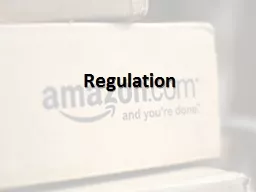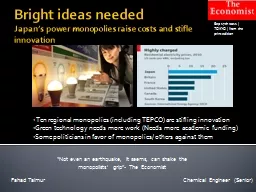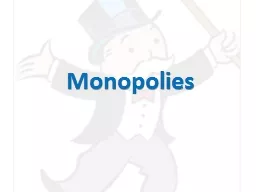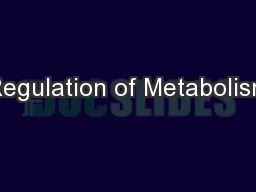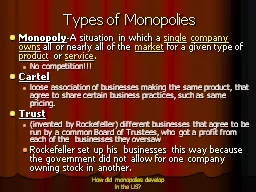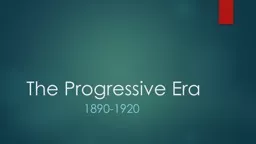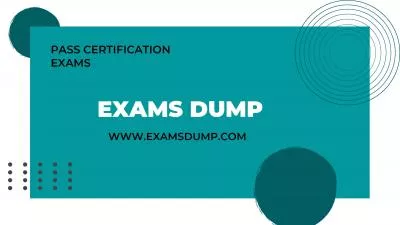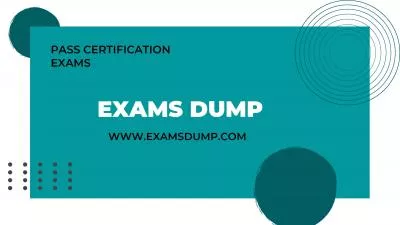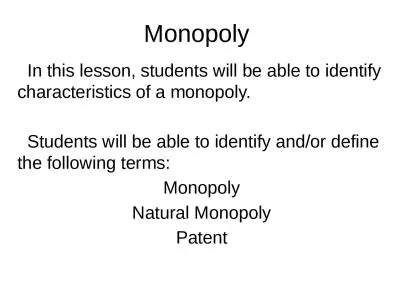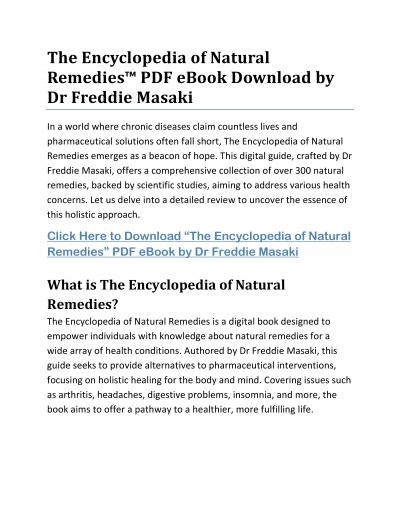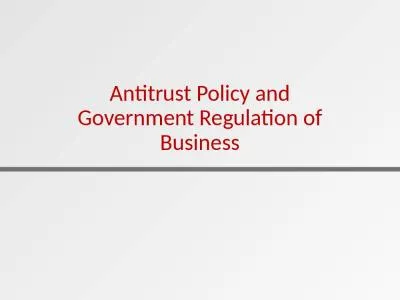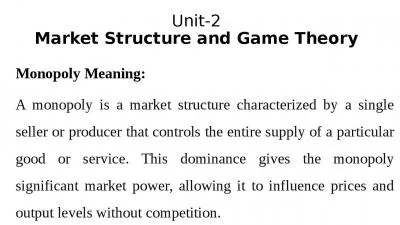PPT-Regulation Natural Monopolies
Author : tawny-fly | Published Date : 2018-11-13
Breaking up a monopoly that isnt natural is a good idea Ex Microsoft buying Apple Why The gains to the consumer outweigh the loss to the producer Natural Monopolies
Presentation Embed Code
Download Presentation
Download Presentation The PPT/PDF document "Regulation Natural Monopolies" is the property of its rightful owner. Permission is granted to download and print the materials on this website for personal, non-commercial use only, and to display it on your personal computer provided you do not modify the materials and that you retain all copyright notices contained in the materials. By downloading content from our website, you accept the terms of this agreement.
Regulation Natural Monopolies: Transcript
Download Rules Of Document
"Regulation Natural Monopolies"The content belongs to its owner. You may download and print it for personal use, without modification, and keep all copyright notices. By downloading, you agree to these terms.
Related Documents

